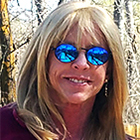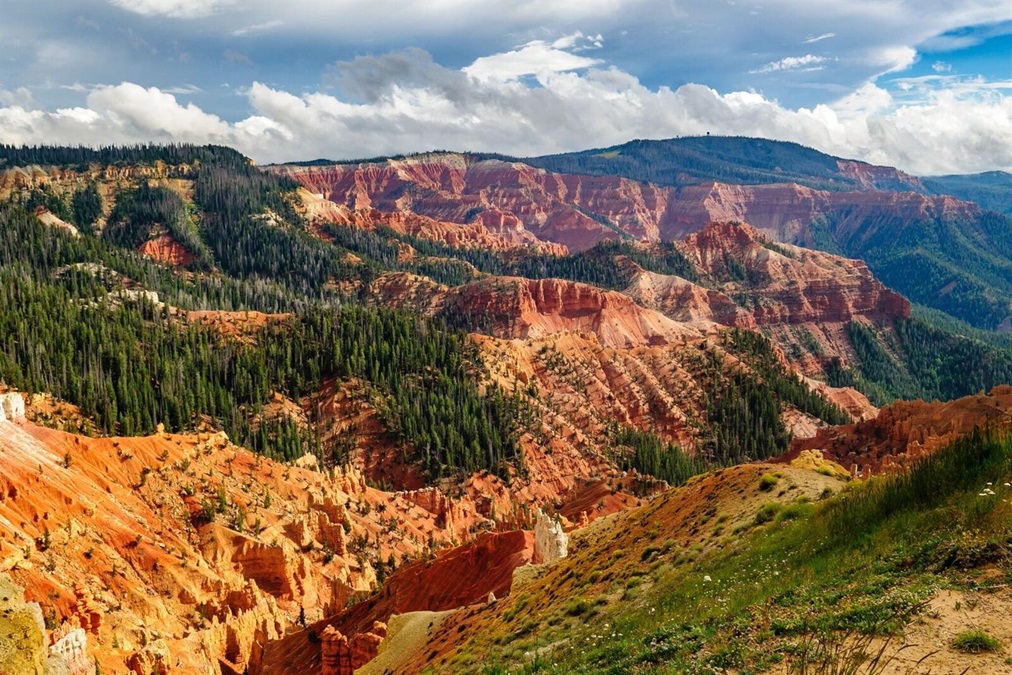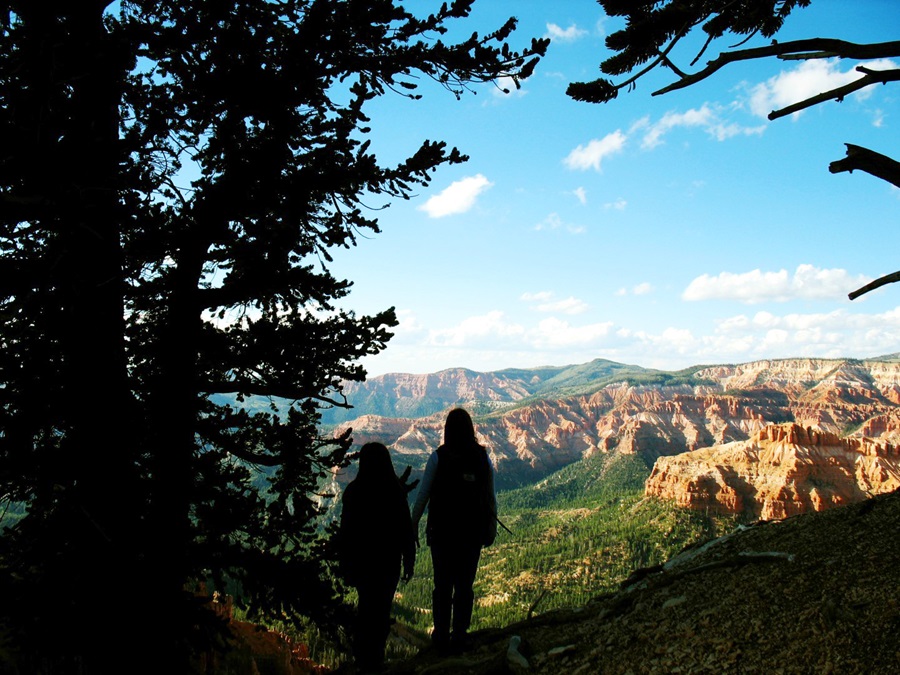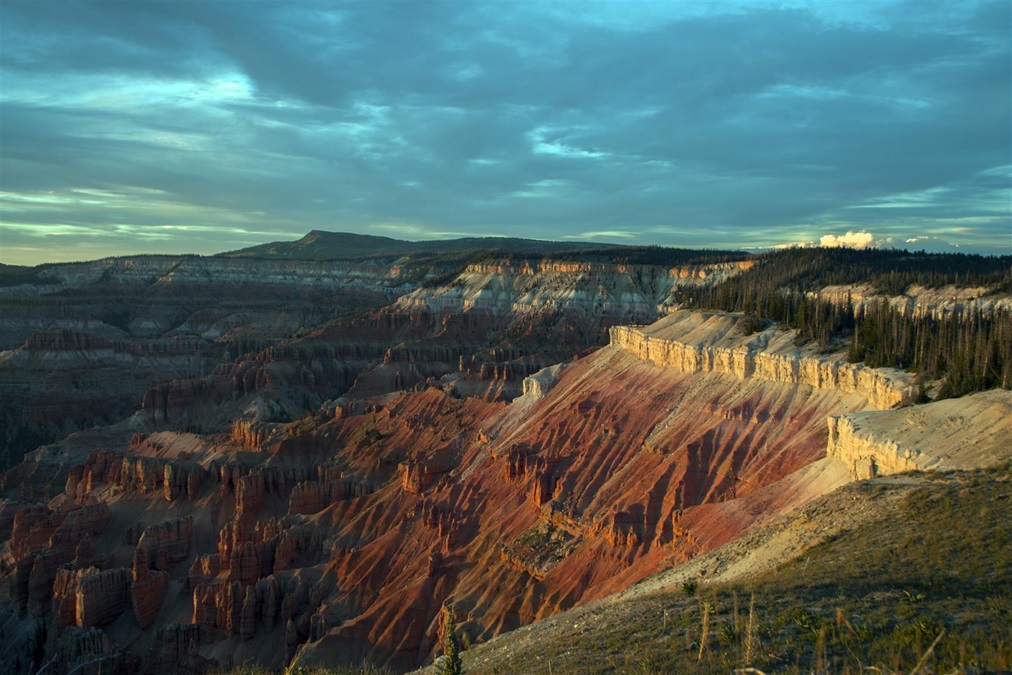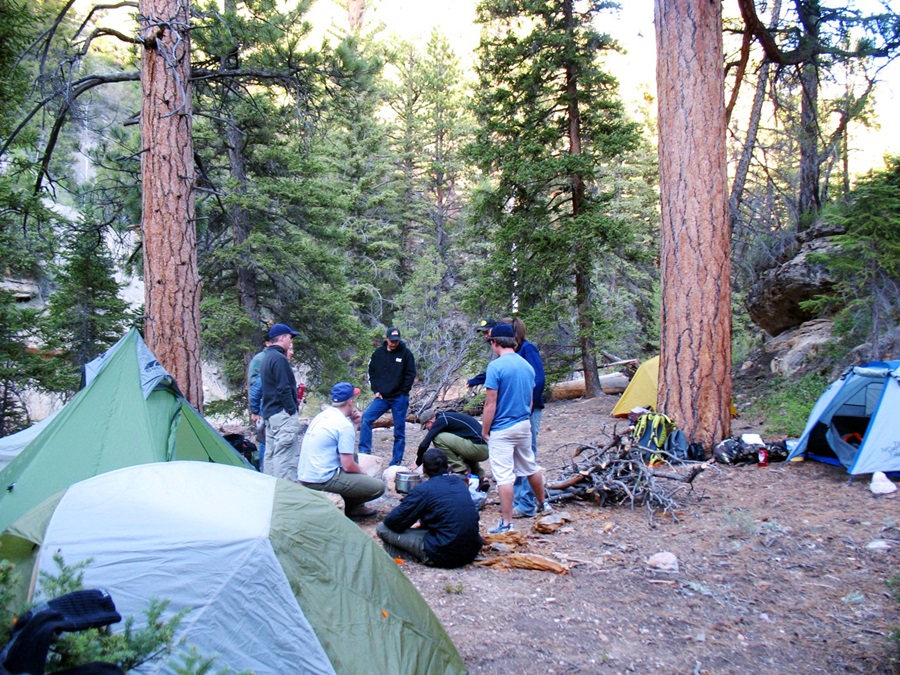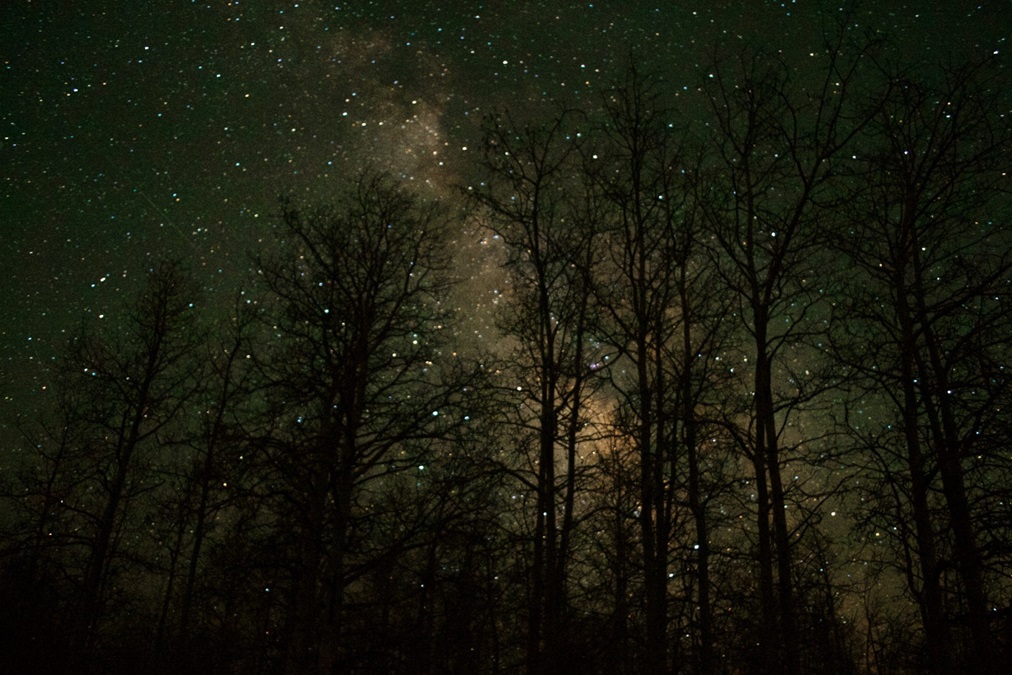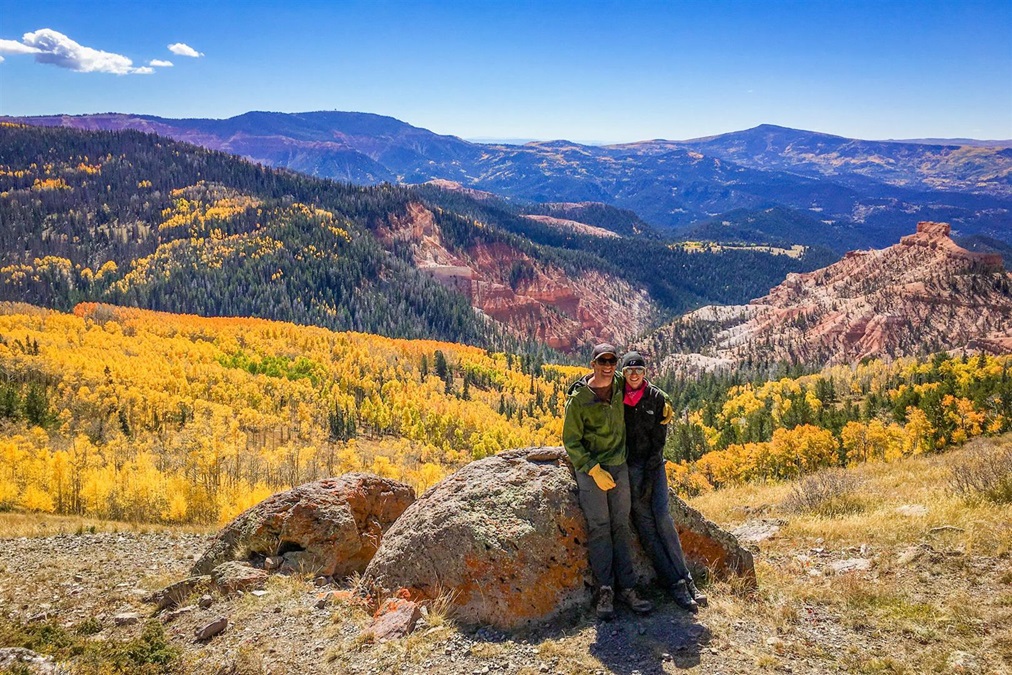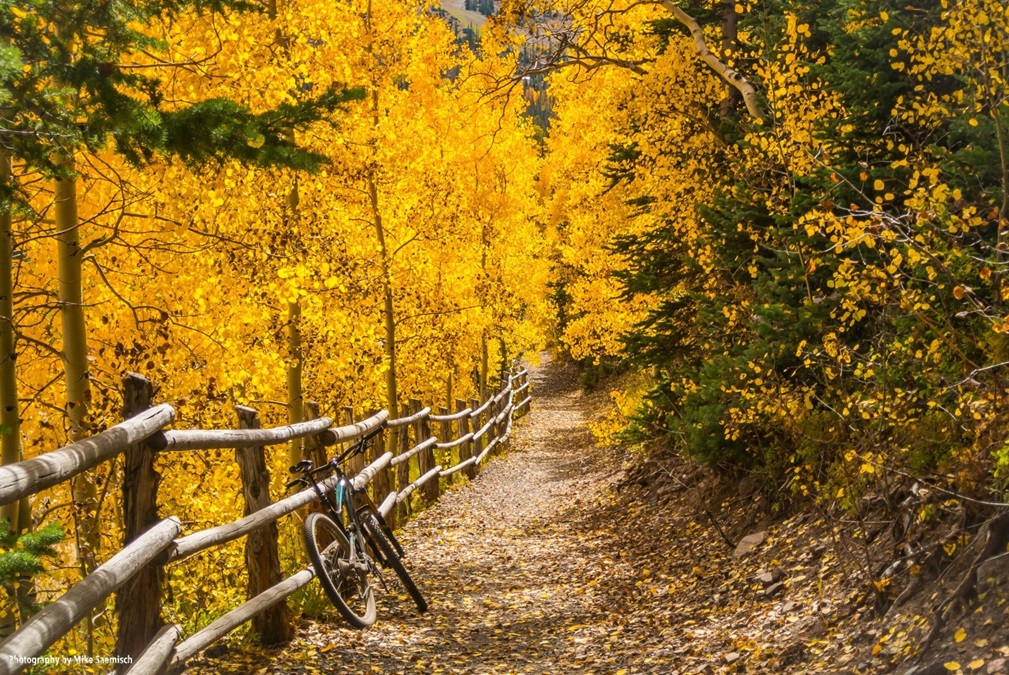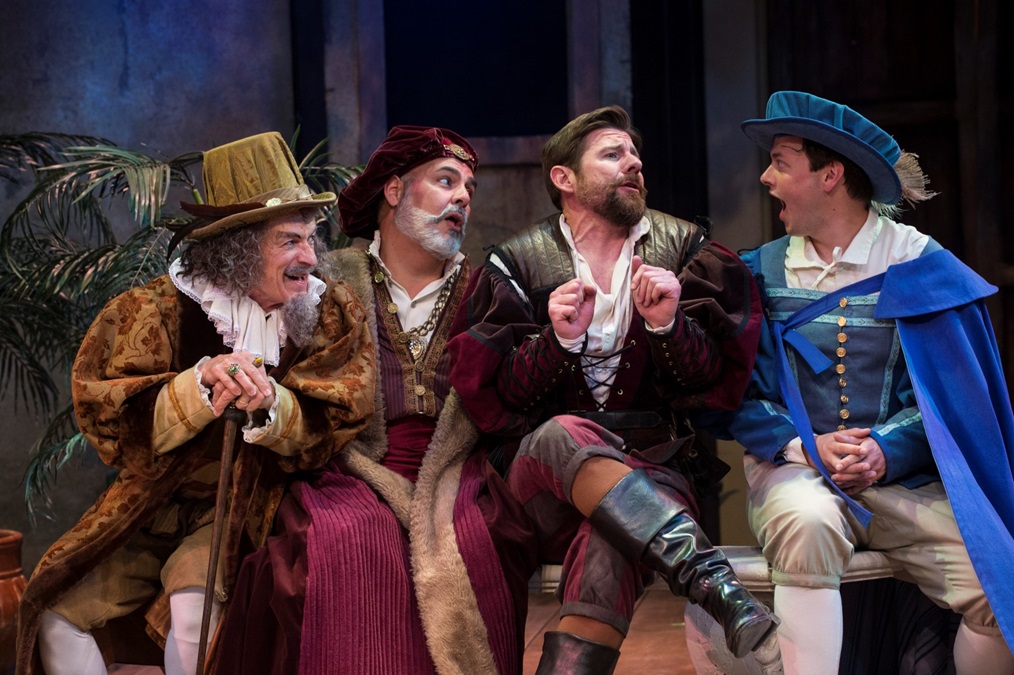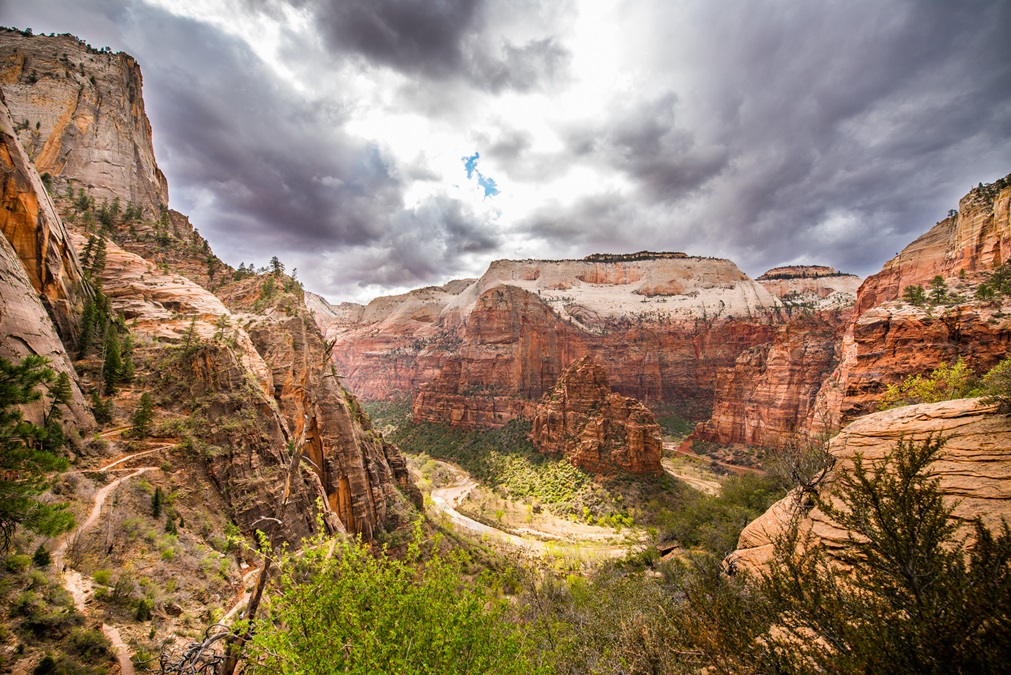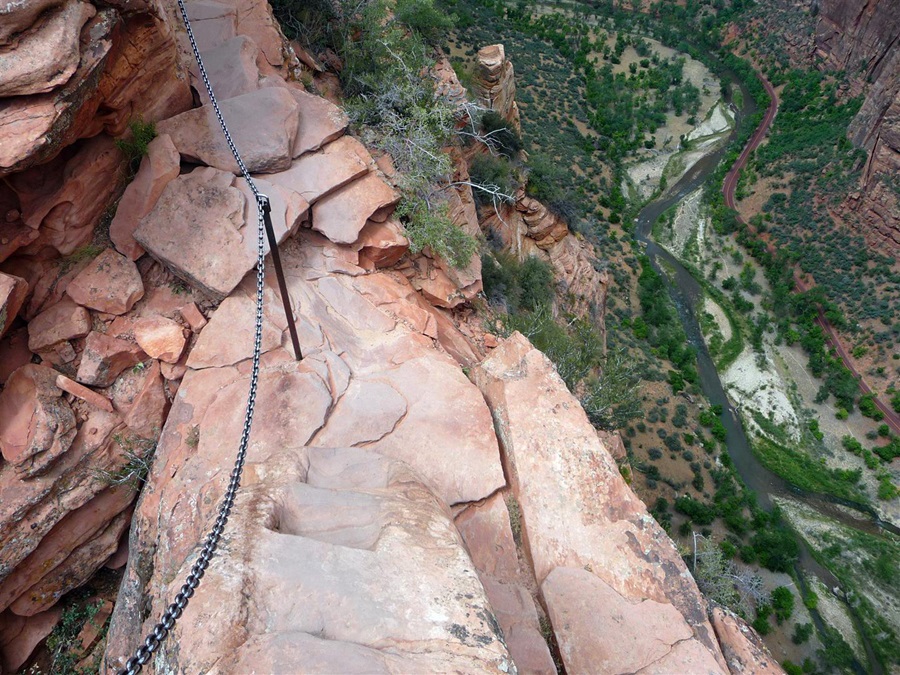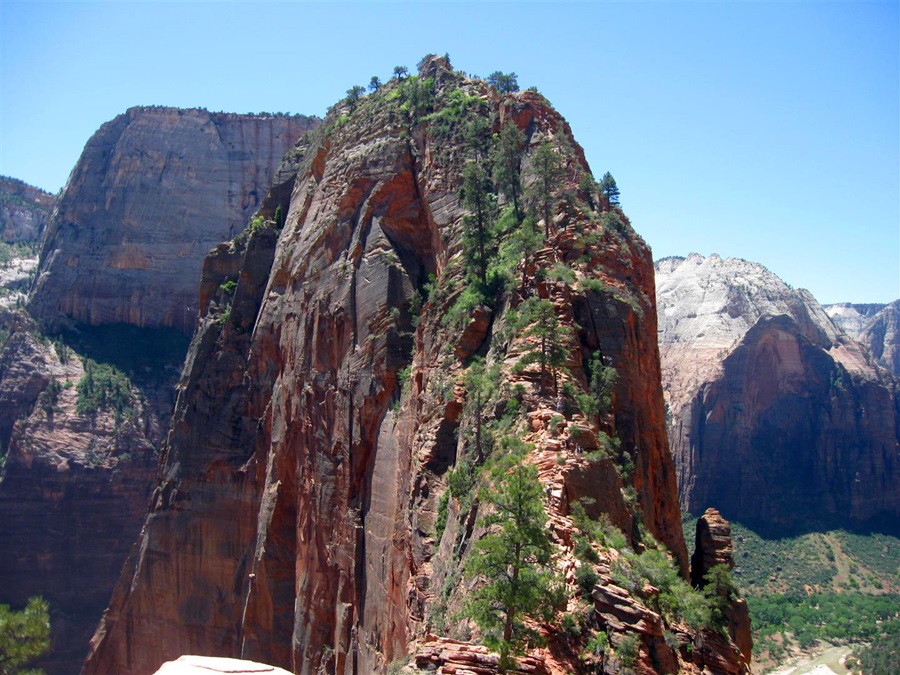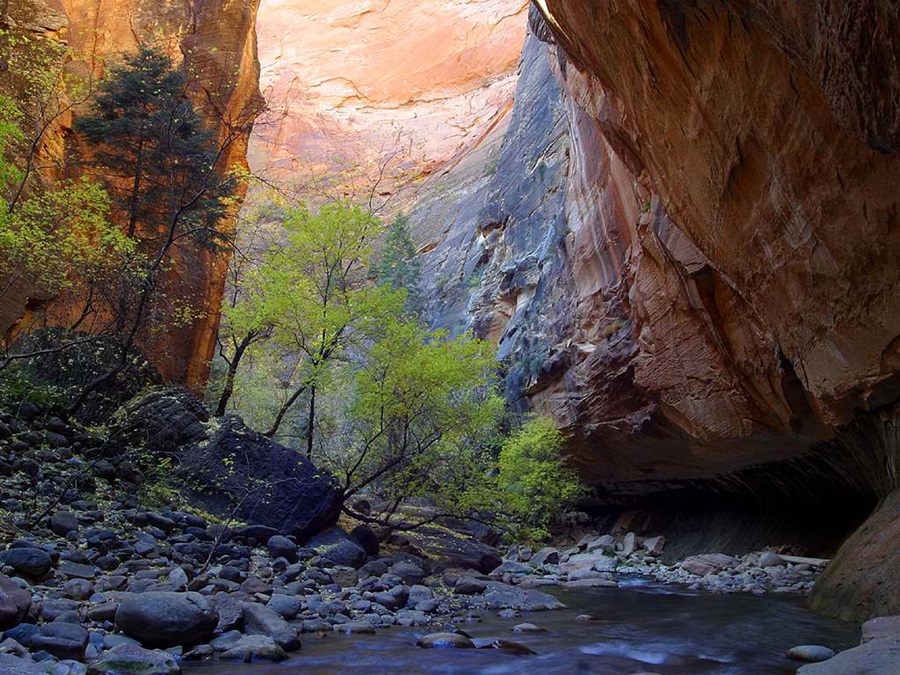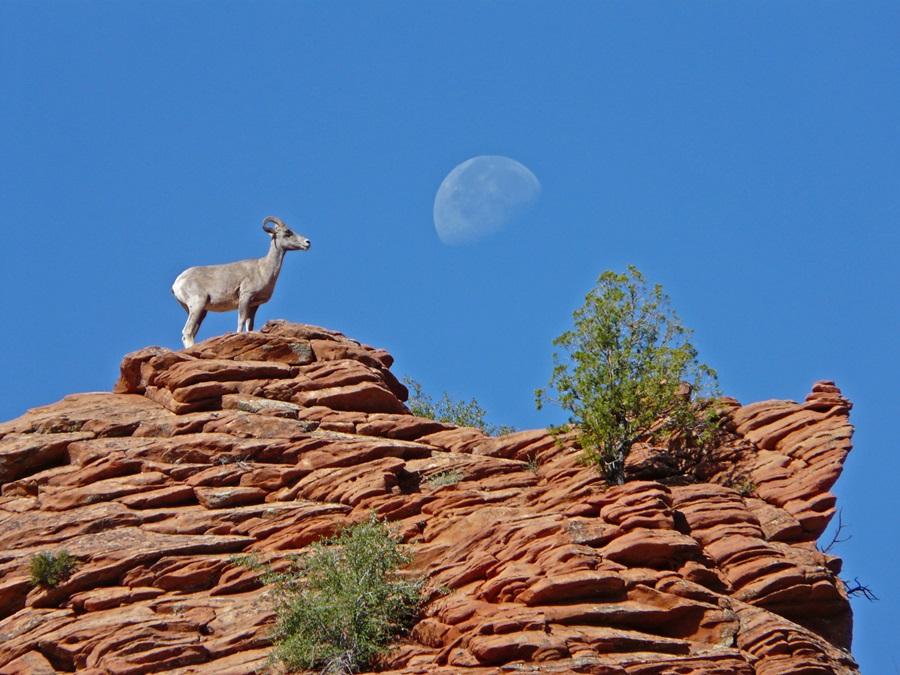Bryce meets the Bard
Cedar City, Utah
Explore Utah's Cedar Breaks National Monument, the park with hoodoos similar to those at Bryce Canyon, but without the crowds. The Scottish-Mormon homesteader Ebenezer Bryce once called the hoodoos “a helluva place to lose a cow.” He never could have guessed the then-tiny settlement of Cedar City would someday host a Shakespeare Festival hailed as one of the world’s foremost regional theaters. Each year more than 150,000 fans of the Bard flock to the five-month season of plays and musicals, presented in the brand-new Beverley Taylor Sorenson Center for the Arts.
In summer, early morning is usually the smoothest time to fly over mountains or deserts. Cedar City Regional, at 5,622 feet, is mountainous desert so that advice goes double. Sphere One has courtesy cars, but you’ll probably want a rental.
One of the highest points in the entire Colorado Plateau is Brian Head, at 11,307 feet msl, just north of Cedar Breaks. If it’s man-made thrills you seek, Brian Head Resort offers zip lines, mountain biking, disc golf, archery, hiking, tubing, and wall climbing, plus skiing in winter and year-round excellent lodging and dining. The fall colors here are mind-boggling!
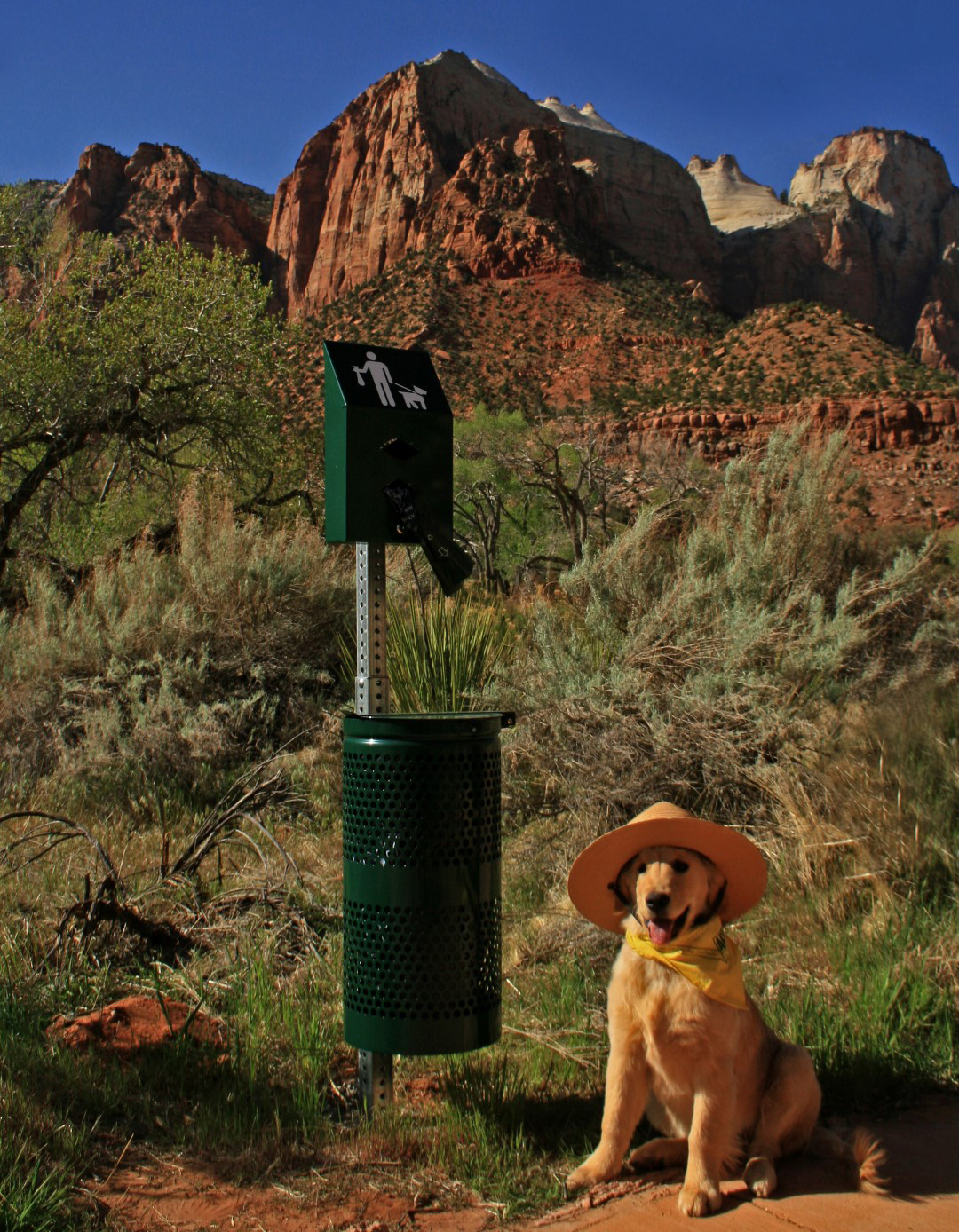
Each year from late June through mid-October, the Tony Award-winning Utah Shakespeare Festival presents matinee and evening performances of Shakespearean and modern plays in repertory. The new facilities include the Englelstad Shakespeare Theatre, an outdoor replica of Shakespeare’s Globe Theatre. There are also two indoor theatres. Many more activities surround the featured performances and create a festive, in-depth experience. Fee events include backstage tours and Repertory Magic (where you see how they change the sets so quickly). Free events include play orientations; actor, costume, prop, and play seminars; and The Greenshow, a 30-minute frolic of music, dance, storytelling, and Elizabethan sweets, held in the nearby Greenshow Commons prior to the main performance. The Best Western Town and Country Inn is just a 15-minute walk from the Shakespeare Festival grounds and even closer to shopping and restaurants, including The Grind Coffeehouse.
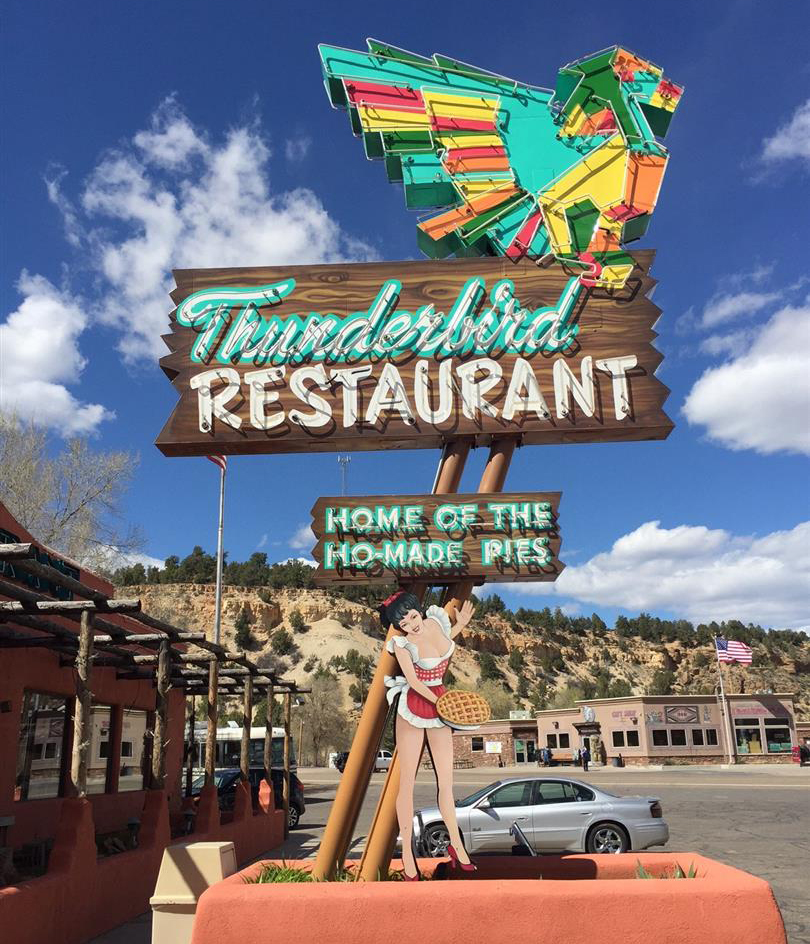
One of Utah’s “Big 5” national parks, Zion National Park can be crowded in summer. Still, if you’ve never been there it’s worth a visit. Plus, if you have time, you can make Zion part of a 150-mile counter-clockwise loop road trip from Cedar City. To visit the best-known portions of Zion, drive south on I-15 and then turn east onto Highway 17 to Springdale (about 60 minutes total). Through late October and weekends in November, you’ll use a shuttle to navigate the park. After 10 a.m., you’re better off parking in Springdale and taking the shuttle from there, or you can continue into the park. Shuttles are free but don’t allow pets. The Zion Lodge is conveniently located at the halfway point of the valley’s scenic drive; guests may park here. Stop for information at the visitors center to plan your day. Popular hikes include Angel’s Landing, the Narrows (see photos for details), and the short-but-steep Weeping Rock Trail that ends at a dripping spring. Rock climbing is allowed in some areas; check with a ranger at the visitors center.
The majestic scenery of the area has inspired artists for more than a century, and Springdale is home to good galleries like the Worthington and David Pettit. Western-style luxury abounds at Zion Mountain Ranch, three miles outside Zion’s east entrance off Highway 9. Fifty minutes east of Springdale in Mount Carmel, the hand-built cabin/studio of famed Western artist Maynard Dixon is open for tours, occasional painting workshops, and other events. Fuel up at the Thunderbird Restaurant; from here it’s another scenic 75 minutes northwest past Cedar Breaks back to Cedar City.
Cedar City can be the gateway to your midsummer night’s dream vacation. You’ll feast your eyes upon vistas familiar to Bryce, scenes familiar to the Bard, and an outdoor cathedral so magnificent it’s named for Paradise. It’s easy to see why generations of artists have set brush to canvas in these canyons. Theater, art, and incomparable scenery will fill your senses and you may depart for home inspired to create new art of your own.

Share your favorite destination in the AOPA Hangar: Places to fly, things to do, where to eat!
